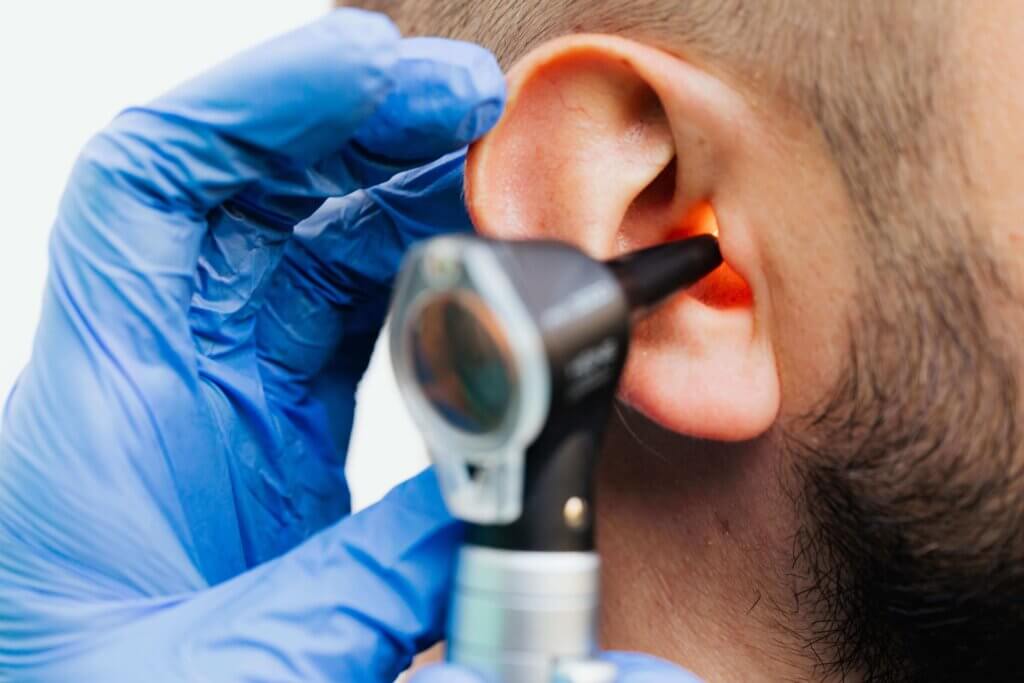Ear wax is a natural and often overlooked component of our ear health. While it protects our ears from foreign particles and keeps them moisturized, a buildup of ear wax can cause discomfort and even hearing problems.
Pay special attention when using ear plugs, in-ear headphones (also called earbuds), and hearing aids as these may cause ear wax to build up. Read on to learn more about ear wax and other causes of clogged ears.
What is Ear Wax?
Ear wax, also known as cerumen, is naturally produced by the glands in your ear canal. It serves several important functions: protection, moisturization, and antibacterial and antifungal properties.
Ear wax is produced continuously, and in most cases, it slowly moves from the deeper parts of the ear canal toward the opening of the ear. Eventually, it dries up and falls out of the ear or is washed away during routine activities like bathing.
While ear wax is generally a helpful and self-regulating substance, in some cases, it can build up and become impacted, causing symptoms such as hearing loss, earache, tinnitus (ringing in the ears), or dizziness. When this happens, it may be necessary to have a healthcare professional remove the impacted ear wax safely.
How to Remove Ear Wax: Does it Hurt?
Ear wax removal should be done carefully and, in most cases, it’s best to seek help from a healthcare provider, like Advanced Urgent Care in Colorado. They have the necessary training and tools to safely and effectively remove impacted ear wax.
Here are some common methods for ear wax removal:
- Ear Irrigation: This involves flushing the ear canal with warm water using a syringe or a specialized irrigation device. The water helps to dislodge and flush out the softened wax. While this procedure can be a bit uncomfortable and may cause a feeling of fullness in the ear, it should not be painful.
- Manual Removal: In some cases, a healthcare provider may use specialized instruments like a curette or suction device to manually remove the wax. When done carefully, this procedure should not cause pain, but it may be slightly uncomfortable.
- Microsuction: This is a more gentle method of removing ear wax using a suction device with a fine tube. It is usually well-tolerated and should not be painful.
- Removal Drops: In many cases, ear wax can be softened using over-the-counter ear drops or drops prescribed by a healthcare provider. These drops are typically administered for a few days before the actual removal process to make the wax easier to remove.
- Home-Use Removal Kits: Some over-the-counter ear wax removal kits are available for home use for ear cleaning. These kits often include drops to soften the ear wax and a bulb syringe or irrigation device. However, it’s crucial to use these products carefully and according to the provided instructions to avoid injury.
Never attempt to remove ear wax with objects like cotton swabs, hairpins, or other items, as this can push the wax deeper into the ear canal, potentially causing damage or impaction.
Can You Get an Ear Infection from Ear Wax Buildup?
Ear wax buildup itself does not directly cause an ear infection, but it can contribute to an increased risk of infection under certain circumstances. Here’s how:
- Obstruction: Ear wax blockage prevents air circulation and creates a warm, moist environment. Bacteria and fungi like to grow in this environment, which increases the risk of infection.
- Skin Irritation: Impacted ear wax can irritate the delicate skin of the ear canal, potentially causing small abrasions or cuts. These areas of irritation can become entry points for bacteria, increasing the likelihood of infection.
- Trapping Moisture: Ear wax can trap moisture in the ear canal, which can create an environment favorable for the growth of bacteria or fungi. This moisture can also soften the skin, making it more susceptible to infection.
While ear wax itself can contribute to the development of ear infections, it is typically not the primary cause of infections. Instead, it often plays a role in creating conditions that are favorable for infection to occur.
Clogged Ear Symptoms
A clogged or blocked ear can be uncomfortable and may result from various underlying causes.
Common symptoms of a clogged ear include:
- Hearing Loss
- Ear Fullness or Ear Pressure
- Tinnitus: The perception of ringing, buzzing, or other sounds in the ear when there is no external source
- Pain or Discomfort
- Vertigo or Dizziness
- Itchiness
Causes of a clogged ear can vary widely and may include:
- Ear Wax Blockage or Excessive Wax
- Ear Infections
- Eustachian Tube Dysfunction: Issues with the Eustachian tube, which connects the middle ear to the back of the throat, can lead to ear blockage. This is common during colds and sinus infections.
- Foreign Objects: Sometimes, small objects or insects can become lodged in the ear canal, causing a blockage.
- Changes in Altitude: Rapid changes in altitude, like when flying or driving in the mountains, can temporarily block the ears. This is usually relieved by yawning, swallowing, or chewing gum.
- Allergies: Allergic reactions can cause inflammation and fluid buildup in the ear, leading to a sensation of blockage.
Urgent Care Ear Wax Removal
Are you looking for “ear wax removal near me”? Look no further than Advanced Urgent Care in Colorado. With locations across the Denver metro area, our clinics are open 7 days a week with evening and weekend hours. Walk-ins are welcome. Click here for a list of our locations and to reserve your spot for a visit online.

